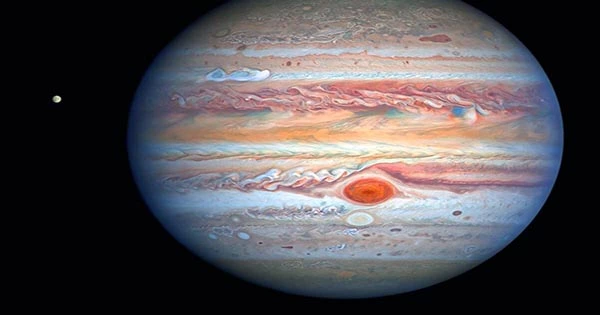Professional astronomers noticed a big light on Jupiter last October. Something hit the solar system’s biggest planet, producing the energy equivalent to two megatons of TNT, akin to the Tunguska impact that shook Siberia in 1908. Since comet Shoemaker-Levy 9 slammed Jupiter in 1994, this was the most powerful known impact on the planet. The manuscript has been approved for publication in The Astrophysical Journal Letters and is available on the research paper repository ArXiv (pronounced archive).
The impact occurred on October 15, 2021, and it was seen by the University of Kyoto’s Planetary ObservatioN Camera for Optical Transient Surveys (PONCOTS). This is the first time the observations have been captured by a dedicated observatory. Previous impacts, with the exception of the comet, were discovered by chance by amateur astronomers, thus having an ad-hoc facility allows for some fantastic science.

For example, the scientists calculated that the impactor weighed around 4.1 million kilograms (9 million pounds), which is equivalent to crashing a couple of space shuttles into the turbulent atmosphere of the King of the Planets. The bolide might have been between 15 and 30 meters (50 to 100 feet) wide, based on the mass estimate. In the great scheme of things, it’s not very huge, yet it’s fast enough to heat up to 8,000°C (14,400°F). This is intriguing since it elucidates the type of body it may have been.
Collecting data on these planetary crashes distant from Earth might help us prepare for the eventuality of a comet or asteroid colliding with us. Given that we still don’t know for sure what happened at Tunguska. The hit seemed to be 10 times brighter than earlier amateur impact readings. It also enabled the researchers to calculate how often such collisions are expected to occur on Jupiter. It happens a lot more frequently than it does on Earth. They’d have a Tunguska-like catastrophe between 100 to 1,000 times more frequently, or around once a year.
With an updated version of its PONCOTS system, the team hopes to undertake a long-term surveillance campaign of Jupiter. “Because the original PONCOTS system is a prototype, it does not allow a remote observation mode, which is critical for long-term monitoring,” said lead author Dr. Ko Arimatsu. “The next-generation PONCOTS system will enable this mode and identify additional impact flashes,” says the researcher.















